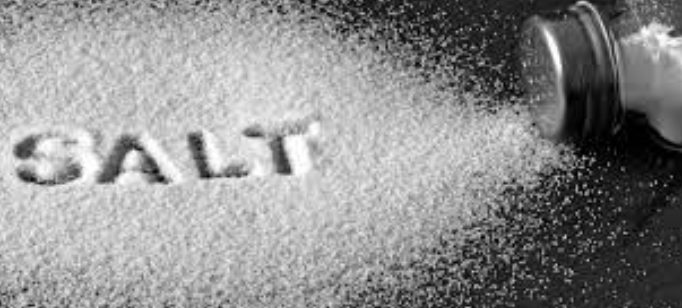According to a recent study, replacing conventional salt with a salt alternatives can lower high blood pressure in older people.
In comparison to older people who use conventional salt, those who use a salt replacement have a 40% lower risk of developing high blood pressure (Journal of the American College of Cardiology, Feb. 12).
“Many adults are tempted to overindulge in salt by cheap, readily available processed foods,” according to main researcher Dr. Yangfeng Wu, executive director of Beijing’s Peking University Clinical Research Institute. In a journal news release, he continued, “It’s crucial to recognize the impact of our dietary choices on heart health and increase the public’s awareness of lower-sodium options.” High blood pressure is the leading risk factor for heart disease and heart-related death, according to the World Health Organization. It affects more than 1.4 billion adults worldwide and results in 10.8 million deaths each year.

Salt Alternatives
For this study, researchers evaluated how sodium reduction might help the blood pressure of seniors residing in care facilities in China. The study involved more than 600 participants, age 55 and older, from 48 care facilities. All patients had blood pressure under 104/90 mmHG, and were not on any blood pressure medications. Half of the care facilities replaced salt with a salt substitute in residents’ meals, while the other half kept using regular salt, researchers said. After two years, the incidence of high blood pressure was more than double at the facilities that kept using salt: 24.3 cases per 100 people per year versus 11.7 cases per 100 people per year at the facilities using salt substitute.

Salt Alternatives
People-years take into account both the number of people in a study and the amount of time each person spends in the study. What’s more, the salt substitutes did not cause dangerously low blood pressure, which also commonly affects older adults. “Our results showcase an exciting breakthrough in maintaining blood pressure that offers a way for people to safeguard their health and minimize the potential for cardiovascular risks, all while being able to enjoy the perks of adding delicious flavor to their favorite meals,” Wu said.

Salt Alternatives
Nephrologist Dr. Rik Olde Engberink stated in an accompanying editorial that the study provides a different approach to advising patients to reduce their salt intake, a tactic that has not been well received by the general population. Olde Engberink, a physician at Amsterdam University Medical Center in The Netherlands, stated in a news release that “the salt substitute was given to the kitchen staff, and the facilities were not allowed to provide externally sourced food more than once per week” in this research. “The food industry should adopt salt substitutes early in the food chain to improve the sodium-to-potassium ratio of processed foods, as this approach may have a greater impact on blood pressure outcomes,” he continued.
Salt Alternatives

Salt Alternatives
Sodium: How to tame your salt habit
Are you getting more sodium than health experts suggest is wise? If so, it could lead to serious health problems.
Sodium is a mineral. You can find it naturally in foods such as celery or milk. Manufacturers may also add sodium to processed foods, such as bread. Sodium is also used to flavor foods in condiments, such as soy sauce. When sodium is combined with another mineral called chloride, the two make table salt.
Salt Alternatives

Salt Alternatives
The daily limit set by nutrition experts in the U.S. is 2,300 milligrams (mg) a day for people ages 14 and older. The World Health Organization suggests a limit of 2,000 mg of sodium a day. Most of the sodium you eat is hidden in prepared foods. And for that reason, many people worldwide take in more sodium than their bodies need. This can put them at higher risk of a long-term illness such as high blood pressure, also called hypertension. See where all that sodium comes from and learn how you can cut back.
Salt Alternatives

Salt Alternatives
Also read: The Relatively Low Popularity of Pickleball Has Also Been Linked To Injuries
images source: Google
Disclaimer: The opinions and suggestions expressed in this article are solely those of the individual analysts. These are not the opinions of HNN. For more, please consult with your doctor




































